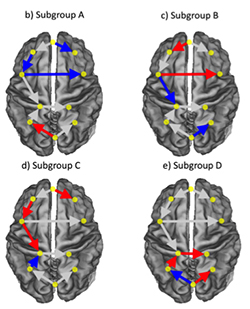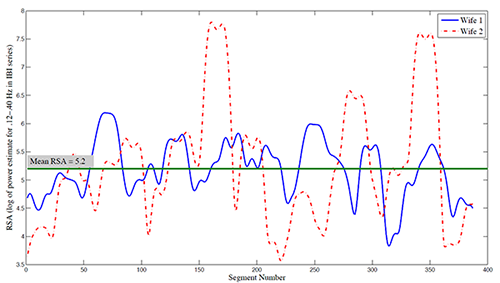 Dr. Katie Gates’ lab primarily looks at quantitative methods for modeling heterogeneity in individual temporal processes. “Temporal processes” refers to anything that unfolds across time. For instance, this can be used to discuss emotional processes, brain processes, psychophysiological processes, or any thing that has a temporal dynamic.
Dr. Katie Gates’ lab primarily looks at quantitative methods for modeling heterogeneity in individual temporal processes. “Temporal processes” refers to anything that unfolds across time. For instance, this can be used to discuss emotional processes, brain processes, psychophysiological processes, or any thing that has a temporal dynamic.
To most people, the notion that heterogeneity exists in these processes makes sense. Ask any two people about any process in their lives, be it their morning routines, how they solved a puzzle, or what brings them happiness, and you will likely get two different answers.
We find that the same holds for psychological processes. As an example, in a set of data collected by colleague Dr. Damien Fair, we found that within a sample of children diagnosed with attention-deficit hyperactivity disorder (ADHD), there were 2 subgroups that had similar brain processes (see figure 1). That is, one model of brain processes would not appropriately describe the sample of ADHD children. 
A similar pattern of heterogeneity is emerging in a set of data from individuals diagnosed with Borderline Personality Disorder (BPD). Here, her team uses daily diary data collected by Dr. Aidan Wright at the University of Pittsburgh.  While examining the relations among common symptoms across days, Dr. Gates and her research team found a subset of individuals diagnosed with BPD who tend to act on their emotions, lose their temper, and do things on impulse. This subgroup had higher scores of depression, suggesting that the BPD symptoms may differ for individuals according to emotional state.
While examining the relations among common symptoms across days, Dr. Gates and her research team found a subset of individuals diagnosed with BPD who tend to act on their emotions, lose their temper, and do things on impulse. This subgroup had higher scores of depression, suggesting that the BPD symptoms may differ for individuals according to emotional state.
In yet another set of data, Dr. Gates investigates the variability of parasympathetic influence on heart rate while parents are interacting with their children. Here, she found that some individuals have very little variability whereas others have a high degree of change across a five minute session (see figure 2).

Dr. Katie Gates is an Assistant Professor in Quantitative Psychology. She develops algorithms and programs that may aid researchers in better quantifying behavioral, psychophysiological, and emotional processes across time. The end goal is to help researchers identify patterns within individuals to provide person-specific prevention, treatment, and intervention protocols as well as better understand the varied basic physiological underpinnings for emotions, cognition, and behaviors that may exist.

